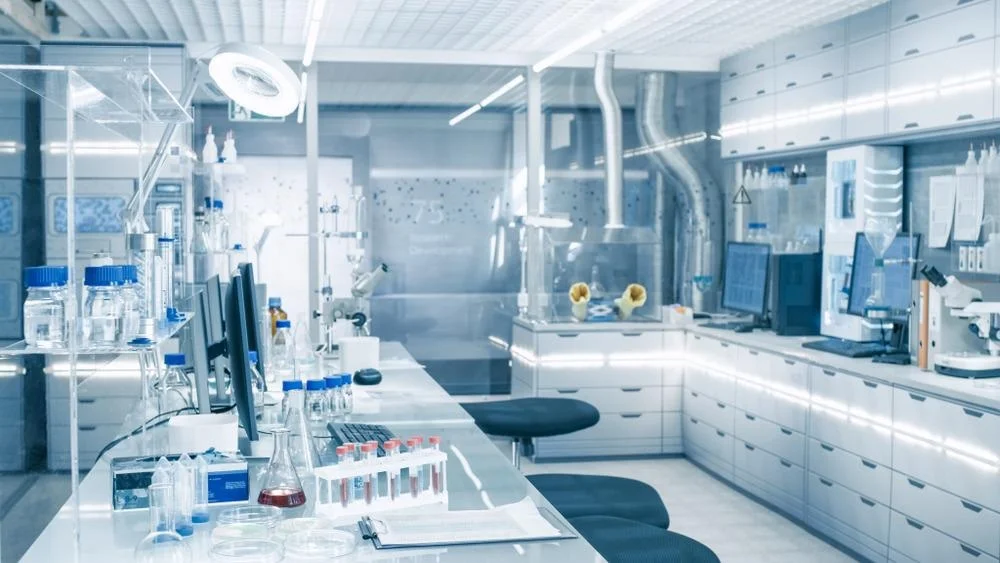Organic Compound Testing
In today's industrial landscape, the accurate identification and quantification of organic compounds are paramount. This is especially true in sectors such as pharmaceuticals, food & beverage, petrochemicals, and environmental compliance, where even minute amounts can have significant impacts on product quality, safety, and regulatory adherence.
Organic compound testing involves a range of analytical techniques aimed at detecting the presence or absence of specific organic compounds within a sample. This process often begins with thorough sample preparation, which may include extraction methods like Soxhlet extraction for fats and oils; distillation for volatile components; or chromatographic separations to isolate pure compounds.
Once prepared, the samples are subjected to various analytical techniques depending on their complexity and the desired outcome. Techniques such as gas chromatography (GC), liquid chromatography (LC), Fourier transform infrared spectroscopy (FTIR), nuclear magnetic resonance (NMR) spectroscopy, and mass spectrometry (MS) play crucial roles in this process.
Gas Chromatography-Mass Spectrometry (GC-MS) is particularly versatile for identifying unknown compounds as it can provide both qualitative information through the retention time of peaks and quantitative data via the mass spectrum. Similarly, NMR spectroscopy offers detailed structural information about molecules, making it invaluable in research and development.
Understanding the standards that govern these tests ensures accurate and reliable results. The International Organization for Standardization (ISO) has published a series of guidelines specifically addressing organic compound testing, including ISO 17025 for laboratory requirements and ISO 13528 on analytical methods. These standards ensure consistency across different laboratories and regions.
| Standard Number | Description |
|---|---|
| ISO 17025:2017 | Laboratory requirements for the competence of testing and calibration laboratories. |
| ASTM E1412-18 | Standard practice for sampling of petroleum, petrochemical, and related products in tanks, tank trucks, rail cars, barges, and ships. |
| EN 1973:2015 | Sampling of bulk solid materials from conveyors. |
The choice of test method depends on the specific compound being targeted. For example, if you're looking to identify a particular pesticide in soil samples, GC-MS would be appropriate due to its high sensitivity and specificity. Conversely, if you need to determine the fatty acid composition of a food product, NMR spectroscopy might provide more detailed structural insights.
Preparation steps vary widely but typically include:
- Cleaning glassware using appropriate solvents
- Sterilization where applicable
- Precise weighing of samples
- Dissolution in solvents compatible with the intended analysis method
Post-analysis, results are interpreted based on the expected outcomes and any deviations from these expectations indicate potential issues that need further investigation. Reporting follows strict protocols outlined by regulatory bodies to ensure clarity and consistency.
The importance of organic compound testing cannot be overstated given its role in ensuring product safety, compliance with environmental regulations, and maintaining brand reputation. By adhering strictly to best practices and utilizing advanced technologies, laboratories can deliver accurate and reliable results that meet the highest standards expected by industry stakeholders.
Applied Standards
| Standard Number | Description |
|---|---|
| ISO 17025:2017 | Laboratory requirements for the competence of testing and calibration laboratories. |
| ASTM E1412-18 | Standard practice for sampling of petroleum, petrochemical, and related products in tanks, tank trucks, rail cars, barges, and ships. |
| EN 1973:2015 | Sampling of bulk solid materials from conveyors. |
The application of these standards ensures that the testing process is conducted in a manner consistent with international best practices. This not only enhances accuracy but also builds trust among clients and regulatory authorities alike.
Why Choose This Test
- Precision: Advanced chromatography techniques allow for highly precise measurements of compound levels.
- Compliance: Ensures adherence to relevant environmental regulations and industry standards.
- Detailed Analysis: Provides in-depth structural information about organic compounds, crucial for R&D activities.
- Rapid Turnaround Times: Modern laboratory equipment allows for quicker processing times without compromising on quality.
- Certified Personnel: Our team comprises experts trained to handle complex analyses accurately and efficiently.
- Wide Range of Services: We cater to diverse industries including pharmaceuticals, food & beverage, petrochemicals, and more.
The combination of these factors makes organic compound testing an indispensable tool for maintaining the highest standards in quality assurance across various sectors. Whether it's ensuring product safety or meeting stringent regulatory requirements, our services provide peace of mind through accurate and reliable results.
Quality and Reliability Assurance
The integrity of organic compound testing is paramount to ensure that the outcomes are both precise and reliable. At our laboratory, we employ rigorous quality control measures at every stage from sample preparation to final reporting. Our personnel undergo regular training and certification to stay abreast with the latest developments in analytical techniques.
In addition to internal controls, external audits by recognized bodies further validate our processes. This commitment to excellence is reflected not only in our certifications but also in client testimonials highlighting their satisfaction with our services. By adhering strictly to international standards such as ISO 17025 and ASTM E1412-18, we uphold the highest levels of integrity and reliability.
Our state-of-the-art facilities equipped with cutting-edge instruments guarantee consistent performance across all tests. From sampling strategies tailored specifically for each type of compound to data validation procedures that ensure accuracy, nothing is left to chance. Regular calibration of equipment ensures that results are repeatable and comparable over time.





